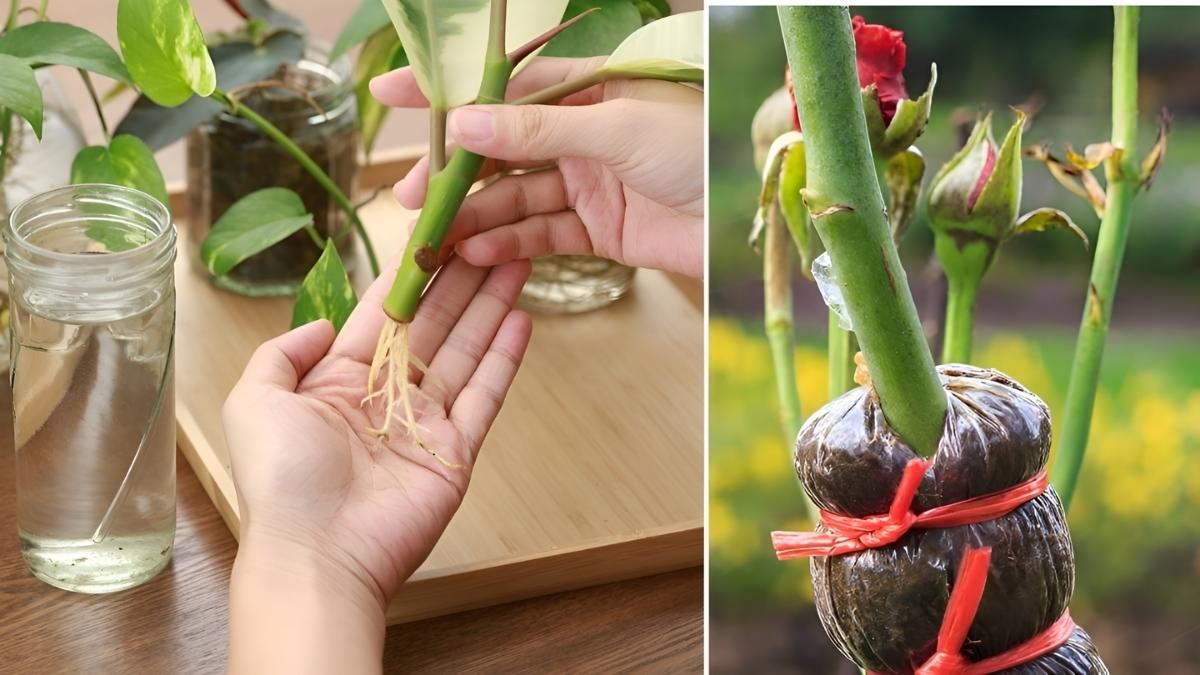Plant propagation is a rewarding way to expand your garden, save money, and ensure the continuity of your favorite plants. Through cuttings and grafting, you can easily replicate the traits of the parent plant. Here are ten plants that benefit from these methods, along with their propagation benefits and processes.
Rose (Rosa spp.)
Roses are beloved for their stunning flowers and rich fragrances. They come in a variety of colors and types, making them a staple in gardens. Roses are often propagated by cuttings, ensuring that the new plants retain the same qualities as the parent.
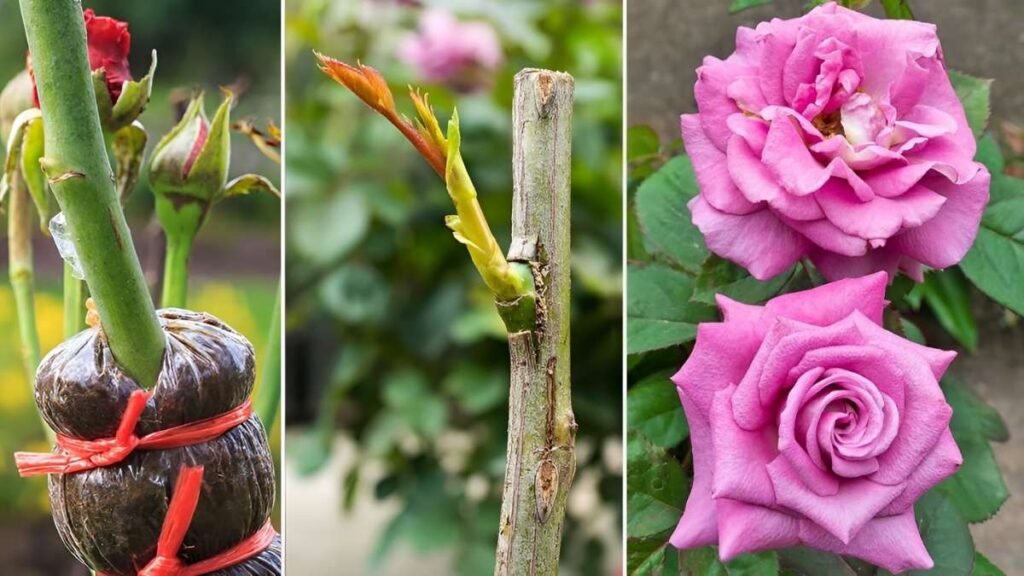
Benefits:
- Rose cuttings preserve the unique color, scent, and growth habits of the parent plant.
- Grafting improves disease resistance and allows for the creation of hybrid rose varieties.
Process:
- Cuttings: Take a 6-8 inch stem cutting, remove lower leaves, and dip the cut end in rooting hormone. Place it in moist soil and cover with a plastic bag to maintain humidity. Roots will form in a few weeks.
- Grafting: Select a compatible rootstock and scion. Attach the scion to the rootstock, making sure the cambium layers align. Secure with grafting tape and wait for new growth.
Apple Trees (Malus domestica)
Apple trees are popular fruit trees, known for their delicious fruits and year-round appeal. While apples can be grown from seeds, grafting is a more reliable method, as it preserves the exact traits of the parent variety.
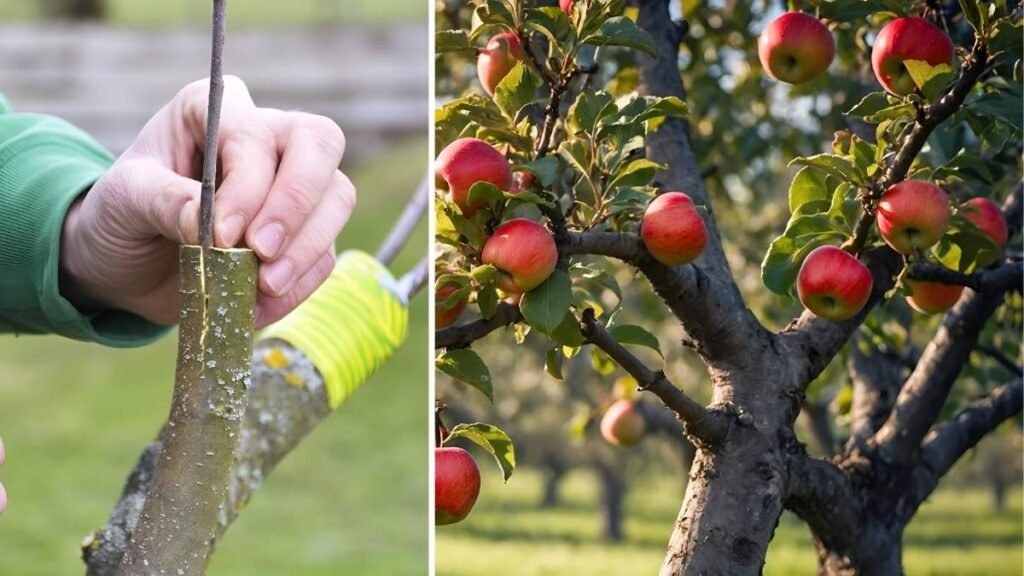
Benefits:
- Grafting ensures that the new tree produces the same type of apple as the parent, maintaining fruit quality.
- Rootstocks control the tree’s size and resistance to diseases.
Process:
- Grafting: Select a rootstock suited for your climate and a scion from the apple variety you wish to propagate. Align the cambium layers of both parts and secure them with grafting tape. Keep the graft area moist and warm until the graft heals.
- Cuttings: Take a healthy, mature stem cutting, dip it in rooting hormone, and place it in a pot with well-draining soil. Roots will form in a few weeks.
Ficus (Ficus spp.)
Ficus species, such as the fiddle-leaf fig, are popular indoor plants known for their attractive foliage. These plants are easy to propagate through cuttings, ensuring you get an identical copy of the parent.
Benefits:
- Cuttings preserve the plant’s characteristics, such as its shape, size, and leaf color.
- Grafting can be done to enhance the plant’s vigor or resistance to certain pests and diseases.
Process:
- Cuttings: Snip a 4-6 inch healthy stem cutting. Remove the lower leaves and place it in water or soil. Keep it in a warm, humid environment until roots develop.
- Grafting: Select a compatible rootstock and attach a scion to it. Ensure proper alignment of the cambium layers, and secure with grafting tape.
Tomatoes (Solanum lycopersicum)
Tomatoes are a staple in many gardens, known for their quick growth and delicious fruit. While they can be grown from seed, propagation through cuttings ensures that the new plant has the same desirable qualities.
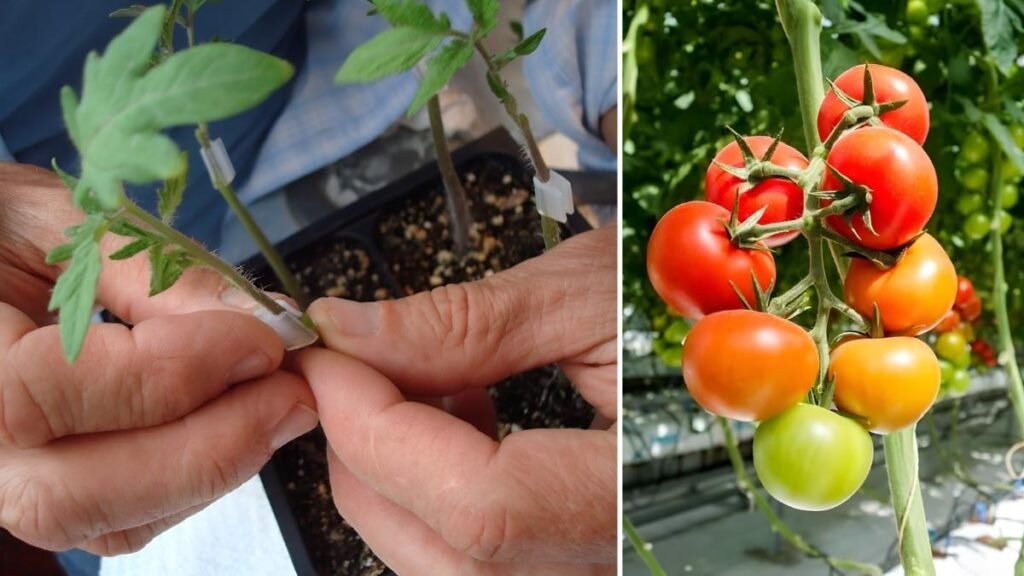
Benefits:
- Propagating tomatoes by cuttings is quick and guarantees a plant with the same fruiting characteristics as the parent.
- Grafting can improve disease resistance and allow for better yields, especially in challenging environments.
Process:
- Cuttings: Take a 4-6 inch piece of stem just below a leaf node, place it in water, and wait for roots to form. Once the roots are developed, transplant the cutting into the soil.
- Grafting: Select a healthy rootstock and graft it with a productive tomato scion. This method improves disease resistance and yields.
Pothos (Epipremnum aureum)
Pothos is a low-maintenance houseplant known for its trailing vines and heart-shaped leaves. It is commonly propagated through cuttings, making it an easy plant to grow and share.
Benefits:
- Propagating pothos through cuttings ensures the new plant will have the same attractive leaves and growth habit.
- Grafting can be used to create hybrid pothos with unique leaf patterns or colors.
Process:
- Cuttings: Cut a healthy vine just below a node, place it in water or moist soil, and wait for roots to form in a couple of weeks.
- Grafting: Grafting is not commonly used for pothos, but it can be done to combine different varieties, producing a more colorful appearance.
Citrus Trees (Citrus spp.)
Citrus trees, such as lemons, oranges, and limes, are beloved for their tangy fruits and fragrant blossoms. Grafting is the preferred method for propagating citrus to ensure the fruit quality is preserved.
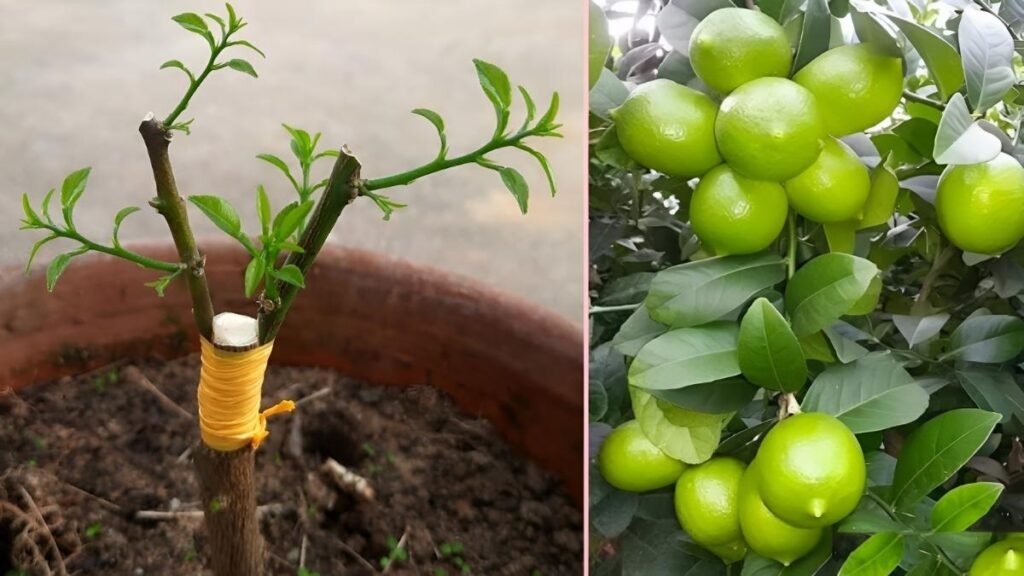
Benefits:
- Grafting ensures that the citrus tree will produce the same fruit as the parent, and it can help create hardier plants.
- Grafting can also make the tree more disease-resistant and better suited to different climates.
Process:
- Grafting: Select a suitable rootstock and scion. The scion is the fruit-bearing part, while the rootstock provides disease resistance. Attach the scion to the rootstock, making sure the cambium layers are aligned, and secure with grafting tape.
- Cuttings: Growing citrus from cuttings is less common but can be done by rooting a healthy stem in moist soil.
Coleus (Plectranthus scutellarioides)
Coleus is a popular annual plant known for its vibrant, colorful foliage. It is particularly easy to propagate from cuttings, allowing gardeners to quickly multiply their plants.
Benefits:
- Propagating coleus through cuttings guarantees that the new plant will have the same vibrant colors and foliage as the parent.
- Grafting is rarely used for coleus but can sometimes create interesting hybrid varieties with distinct leaf patterns.
Process:
- Cuttings: Take a 4-6 inch cutting, remove the lower leaves, and place it in water or moist soil. Roots will form in 2-3 weeks.
- Grafting: Grafting is not typically done with coleus, but it may be used to enhance specific leaf traits or produce unique hybrids.
Chili Peppers (Capsicum spp.)
Chili peppers are known for their heat and vibrant colors. While they can be grown from seed, taking cuttings from a mature plant is an excellent way to ensure you get the same flavor and spice level.
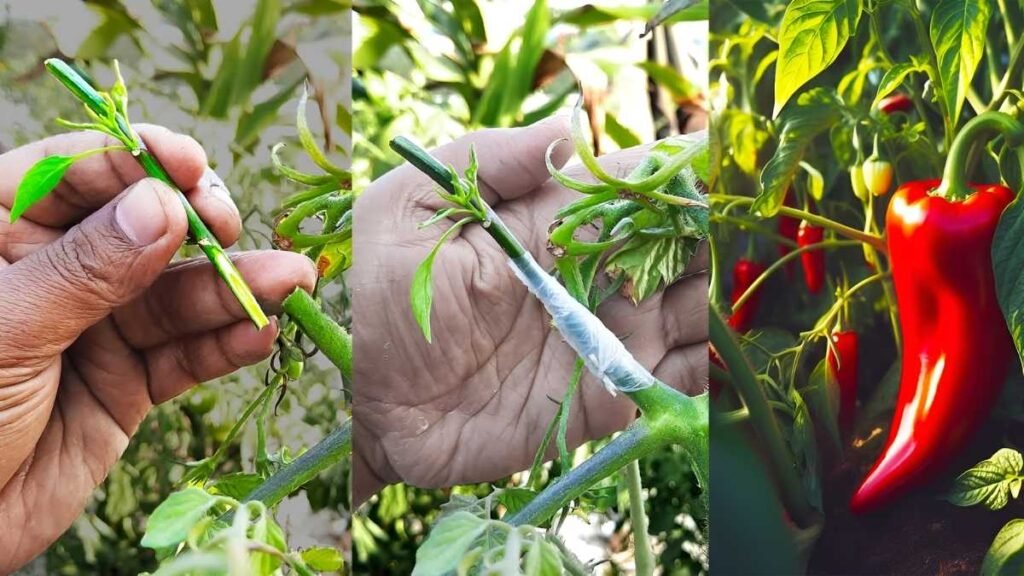
Benefits:
- Propagating chili peppers through cuttings ensures identical taste and heat.
- Grafting can increase resistance to diseases and improve plant vigor.
Process:
- Cuttings: Snip a 4-6 inch cutting, remove the lower leaves, and place it in water or soil. Once the roots form, transplant it into a larger pot or garden.
- Grafting: Graft a chili pepper scion onto a strong, disease-resistant rootstock for improved plant health and yield.
Grapevines (Vitis vinifera)
Grapevines are well-known for their high yields of delicious fruit. Propagating grapevines through cuttings is a traditional and effective method, ensuring the new vines will bear similar fruit to the parent.
Benefits:
- Grapevines can be propagated through cuttings to produce plants with the same fruit quality and growth characteristics.
- Grafting can enhance disease resistance, improve productivity, and allow for hybrid plants.
Process:
- Cuttings: Take a 12-inch cutting from a mature vine with at least one bud. Plant the cutting in moist soil, and it will root in a few weeks.
- Grafting: Select a healthy rootstock and scion, then graft them together to ensure better hardiness, fruit yield, and disease resistance.
Clematis (Clematis spp.)
Clematis vines are beloved for their stunning flowers, which come in a variety of colors and shapes. These plants are easily propagated from cuttings, preserving the unique flowers of the parent plant.
Benefits:
- Propagating clematis through cuttings allows you to grow identical plants with the same stunning flowers.
- Grafting helps improve flower size, color, and plant hardiness.
Process:
- Cuttings: Take a healthy stem cutting, dip it in rooting hormone, and place it in moist, well-draining soil. Roots will form in a few weeks.
- Grafting: Grafting is less common but can be used to combine different flower traits or to enhance growth characteristics.
Conclusion
Whether you’re looking to multiply your favorite plants or create hybrids with specific traits, propagating through cuttings or grafting is a rewarding method. By following the proper processes for each plant, you can enjoy healthy, thriving plants that retain the best qualities of their parent varieties.

